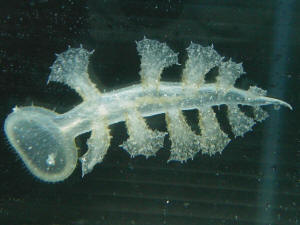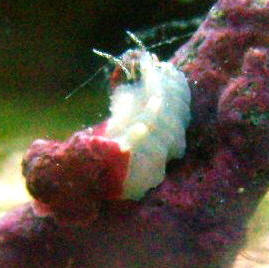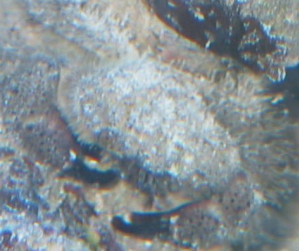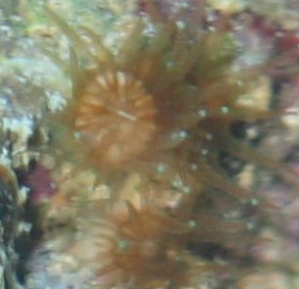|
FAQs about Non-Vertebrate Animal Identification
54
Related Articles: Marine Invertebrates, Marine Invertebrate Systems, Marine Invertebrate Compatibility,
Marine Invertebrate Disease,
Marine Invertebrate
Reproduction, Quarantine of Corals and
Invertebrates, Feeding
Reef Invertebrates, Lighting
Marine Invertebrates, Water Flow, How Much
is Enough,
Related FAQs: Non-Vert IDs 1, Non-Vert IDs 2, Non-Vert IDs 3, Non-Vert IDs 4, Non-Vert IDs 5, Non-Vert IDs 6, Non-Vert IDs 7, Non-Vert IDs 8, Non-Vert IDs 9, Non-Vert IDs 10, Non-Vert IDs 11, Non-Vert IDs 12, Non-Vert IDs 13, Non-Vert IDs 14, Non-Vert IDs 15, Non-Vert IDs 16, Non-Vert IDs 17, Non-Vert IDs 18, Non-Vert. ID 19, Non-Vert. ID 20, Non-Vert. ID 21, Non-Vert. ID 22, Non-Vert. ID 23, Non-Vert. ID 25, Non-Vert ID 26, Non-Vert ID 27, Non-Vert ID 28, Non-Vert ID 29, Non-Vert ID 30, Non-Vert ID 31, Non-Vert ID 32, Non-Vert 33, Non-Vert ID 34 Non-Vert ID 35, Non-Vert ID 36, Non-Vert ID 37, Non-Vert ID 38, Non-Vert ID 39, Non-Vert ID 40, Non-Vert ID 41, Non-Vert ID 42, Non-Vert ID 43, Non-Vert ID 44, Non-Vert ID 45, Non-Vert ID 46, Non-Vert ID 47, Non-Vert ID 48, Non-Vert ID 49, Non-Vert ID 50, Non-Vert ID 51, Non-Vert ID 52, Non-Vert ID 53, Non-Vert ID 55, Non-Vert ID 56,
Non-Vert ID
57, Non-Vert ID 58,
Non-Vert ID 59,
Non-Vert ID 60, Non-Vert ID 61,
& Marine Invertebrates, Marine Invert.s 2, Marine Invert.s 3, & FAQs about:
Marine Invertebrate Behavior,
Marine Invertebrate
Compatibility, Marine
Invertebrate Selection, Marine
Invertebrate Systems, Feeding
Reef Invertebrates, Marine
Invertebrate Disease, Marine
Invertebrate Reproduction, &
& LR
Life Identification, LR Hitchhiker ID
1, Anemone Identification,
Aiptasia
Identification, Aiptasia ID 2,
Worm Identification, Tubeworm ID, Polychaete Identification, Snail Identification, Marine Crab
Identification, Marine Invert.s 1,
Marine Invert.s 2, Marine Plankton,
|
 |
|
Cucumber? Likely Vermetid Gastropod --
9/3/10
Hey Crew,
<Hey Chris, Lynn here today. How are you doing, my friend?
Just found this guy today and was wanting some reassurance that
it is a cucumber.
<I don't think it's a Cuke. Judging from the
combination of those two antennae and what looks like a
shell/tube that it's emerging from, I think it's more
than likely a harmless Vermetid Gastropod. Please see the
following links for more information:
http://www.wetwebmedia.com/MolluscPIX/Gastropods/Prosobranch%20PIX/Vermetids/tubesnailidf.htm
http://wetwebmedia.info/?p=1378
By the way, let me know if I'm misinterpreting the photo.
That is, the critter is not actually living within a tube-like,
coralline encrusted shell.>
It is about 1/4" long and 1/4" diameter. My tank is a
year old and I have had quite a few hitch hikers, some good, some
bad. You guys (and gals) have helped me ID some of them and a
picture of my Scutus Snail (Batman) was on the short list for an
article that one of you was help put together.
<That's right and I'm hoping to see it in the next
issue of Ultramarine Magazine (#24: October/November)! As soon as
I find out, I'll let you know.>
Thanks for the help and keep up the great work y'all are
doing.
<You're very welcome, and thank you!>
Chris
<Take care, Lynn Z>
|
 |
|
help ID some critters - 8/17/10
Hello from South Africa!
<Hello from the Mendips!>
You really have such a great, informative website.
<Thank you>
I was hoping you would be able to help me ID these critters that
have hitched a ride on some Indonesian live rock I recently
purchased. I am starting up a new system so I don't have any
livestock or substrate in the tank just yet.
<Ok>
I am obviously concerned that some of these could be detrimental
in the long run and I am hoping to establish a mixed reef
tank.
I apologise as the picture quality is not the greatest.
<I think they are ok>
There are a number of these hairy crabs in the live rock and I
have seen them graze on algae.
<I think these are Xanthid crabs, but I am not able to i.d. to
the species. They may graze on algae as well as any opportune
morsel they can, so they cannot be considered 'safe'.
http://www.chucksaddiction.com/hitchcrabs.html . If they
don't seem to be a problem you can leave them, just keep an
eye out for trouble. The large claws indicate that they will take
meaty fare, which could include just about anything>
I also have these small anemones which don't appear to be
bigger than about 5mm (about a quarter inch)
<These appear to be Scleractinian corals of some kind, not
anemones. It looks like they have a hard, circular corallite
underneath the polyps, which themselves seem to have light
coloured tips. A lucky hitchhiker if so! Have a look through
here: http://www.wetwebmedia.com/stonycoridfaq.htm>
Thanks very much for your assistance!
<No problem>
Regards
Sujan
<Simon>
help ID some critters
<Sujan, I have just taken another look at your picture, and I
would remove that 'reaching' stalk of Caulerpa to the
left of the picture... this is a danger to the coral growing
there. Simon>
|
  |
|
Re: help ID some critters
8/18/10
Hi Simon
<Hi Sujan>
Thank you so much for the advice.
<It's a pleasure!>
I do have a few branches of these grape Caulerpa
on a few pieces of rock.
Not too much but better to stop it in its tracks before it
becomes a problem.
<It can race across the rocks and literally grow
'through' Cnidarian life, to say nothing of the toxicity
of large amounts of it.>
I have also noticed this other type of algae which resembles
tufts of grass - could this also be problematic?
<Only if it gets too prolific. A little algae growth is
expected and desired>
Regards
Sujan
<Simon>
|
ID Please: Nudibranch, Possibly Melibe
viridis -- 8/5/10
Dear WWM Crew,
<Hello James, Lynn here today.>
I received this as a freebie from my LFS in Nagasaki, Japan. I have
no idea what it is and was wondering if you might shed some
light.
<What you have is a neat little Nudibranch in the genus Melibe,
family Tethydidae. Without knowing where it originated, I can only
give you a best guess as to species. It looks most like Melibe
viridis, a potentially large (up to 12cm/4.72' long) species
with a taste for crustaceans. For more information/photos, please
see the following link:
http://www.seaslugforum.net/showall/meliviri >
It is 8 cm long. I've attached a picture as it looks like
something you'd find under a microscope.
<Great photo!>
Whatever it is, I'm not letting it near my H. kelloggi until I
know it's safe.
<Well, personally, I wouldn't add this to a seahorse tank.
Although Melibe viridis is a crawler that mainly eats crustaceans,
it can get fairly large. I'm not sure how large your H.
kelloggi individual is but I wouldn't exclude the possibility
of the Nudibranch coming across it while it's resting,
trapping, and ingesting it.>
Regards,
James Miller
Okayama, Japan
<Take care, Lynn Z. > |
 |
Mysterious Creature 8/5/10
Hello Lynn, hello Bob,
There's a great mysterious creature question in the marine
inbox. I have NO idea at all what it is. Can't wait to hear
what you think.
Cheers, Neale
Re: Mysterious Creature
Thanks Neale,
I've seen one of these odd-looking creatures before.
It's a Nudibranch in the genus Melibe,
possibly Melibe minuta - http://www.seaslugforum.net/meliminu.htm
I just woke up, so as soon as I get some coffee in me,
I'll get the query written and sent on its way.
Take care and thanks again,
-Lynn The ones I've seen in N.E. Sulawesi, suck
up/vacuum muck... will attach pix. B
Yikes! What I still have a hard time grasping is
how it can consume sizable crabs without getting
nipped into letting go, or shredded. That oral
"veil" must be a lot tougher than it
looks.
-Lynn
Some are outright surprisingly LARGE! Have
"come across" species, specimens over a
foot in length. B Wow, how neat is that?
Great shots, Bob!
-Lynn Mmm, well, wrong lens... 105
mm... and too short a focal depth/width...
<Well, I guess that just shows how much I
know...or don't know! I thought they
looked great. It's just such a
neat-looking creature. It looks like a
miniature version of some space monster from
the original Star Trek series.  >
but neat animal.
<Definitely!>
It had some commensal Hippolytid
shrimps "riding shotgun" on
it, neat as sunshine. B
<Oh wow, that is neat. I guess they
fed on whatever was stirred
up/dislodged as the Nudi foraged? See,
this is why I love ID work so much.
I'm not able to see all the neat
things you regularly observe in person
while diving, but this way I still get
to "discover", albeit
vicariously, some unbelievably neat
creatures. Thanks for sharing your
photos..take care, Lynn>
<Welcome Lynn. B>
|
Taxonomy: Book Recommendations for Marine Invertebrate ID --
7/31/10
Hello.
<Hi Donald, Lynn here today.>
I am interested in learning how to identify marine invertebrates.
<My kind of guy!>
I was writing to ask which text(s) you would recommend.
<See below.>
I am getting into (not quite drowning) saltwater and currently am
keeping a 29 gal mixed tank. I am sick of looking at pictures for hours
trying to figure out what the heck is in my tank. It makes it much
easier to reference how to care for something or whether it is good or
bad if you actually know what it is.
<Absolutely>
With that being said I am seeking your opinion(s) on which books I
should, You would, invest in for identifying marine invertebrates. I am
interested in the taxonomy of reef invertebrates in particular if you
know of a text/reference more specific to that area.
<I'll give you my top three:
1. Invertebrate Zoology, by Edward Ruppert and Robert Barnes. It's
not strictly marine, but it's the best book I know of for
invertebrate study. It's actually a textbook with what may
initially seem like more information than you need, but if you want to
get into invertebrate ID, this is a must. There are seven editions that
have been released over the years that you can usually find used at a
very reasonable price. I'd go with the latest edition you can
afford.
2. Reef Invertebrates, An Essential Guide to Selection, Care and
Compatibility, by Robert Fenner and Anthony Calfo. What can I say, this
is a great book!
3. Marine Invertebrates: 500+ Essential-To-Know Aquarium Species, by
Ronald L. Shimek. This is a terrific, quick ID source book.
There are many other books I could recommend, but these three are a
good starting spot for helping you to recognize the various
groups/phyla that you might run across in your tank. As far as strictly
marine invertebrate books, they're out there, but most of the ones
I've run across tend to offer fairly general information, as
opposed to the detailed textbook level of the Ruppert/Barnes book. It
really is a terrific information source.>
Thank You.
<You're very welcome. If you need any other recommendations,
please let me know!>
Donald
<Take care, Lynn Z>
|
|

